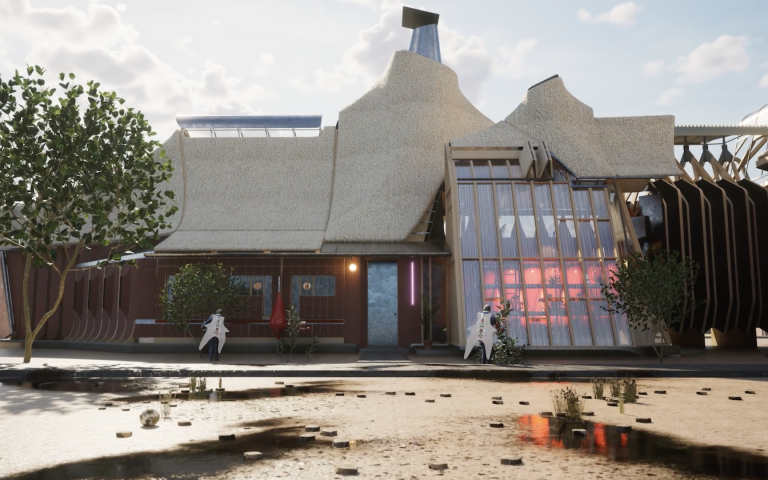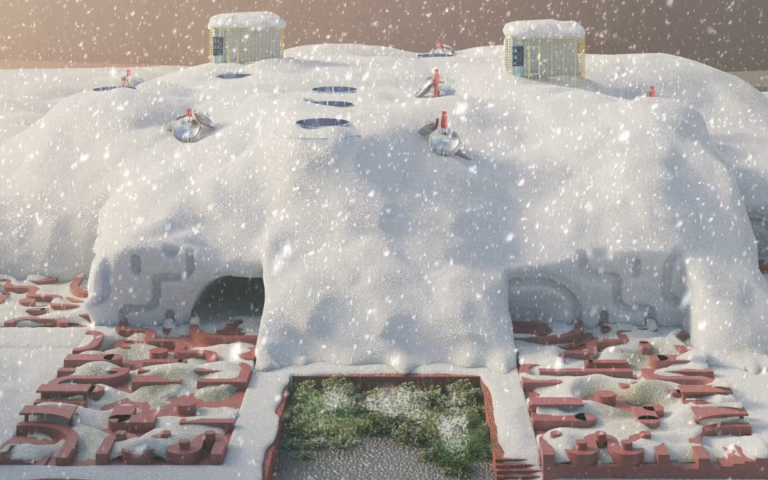Bartlett Students Win RIBA Wren Insurance Association Scholarship 2023
27 November 2023
Architecture MArch students Maciej Adaszewski and Henry Aldridge were two of five recipients of the prestigious award for graduate students.

The RIBA Wren Insurance Association Scholarship supports outstanding students who have completed Architecture BSc (ARB/RIBA Part 1) and can demonstrate the potential to make a significant contribution to the architectural profession.
Each recipient of the scholarship will receive £7,500 and will have the opportunity to be mentored by an architect member of The Wren Insurance Association Limited.
Maciej Adaszewski’s research explores architecture's role in preserving endangered landscapes within remote communities impacted by land exploitation. Henry Aldridge’s work focuses on physical and digital experimentation in resilient architecture to address climate change.
RIBA President, Muyiwa Oki, said the following about the winners:
“Our scholarships provide fundamental support in helping architecture students achieve their aspirations. Thanks to the ongoing generosity of the Wren Insurance Association, five talented and innovative students have been allowed to develop their careers. I look forward to seeing how their work impacts the architecture profession and the built environment."
Maciej is in his final year of study on Architecture MArch (ARB/RIBA Part 2), tutored by Prof Penelope Haralambidou and Michael Tite.
Reacting to the win, Maciej commented:
“I am deeply grateful for the RIBA Wren Insurance Association 2023 scholarship, which will enable me to fully focus on my studies and pursue my further development in applying emerging technologies to architectural design. It will fuel my ongoing research into architecture's role in preserving endangered landscapes within remote communities impacted by land exploitation. Those living at the forefront of areas affected by the climate crisis are often the least heard of; through the use of emerging technologies, I plan to amplify their narratives."

Henry is in his final year of study on Architecture MArch (ARB/RIBA Part 2), tutored by Prof Laura Allen and Prof Mark Smout.
Reacting to the win, Henry commented:
“I am honoured to be selected as a RIBA Wren scholar, an opportunity that will surely advance both my academic and professional careers in architecture. The scholarship will allow for much more ambitious physical and digital experimentation in the development of my final project and thesis. I hope to undertake comprehensive field studies and material tests in my research into equitable and exciting proposals surrounding climate change, long-term landscape design, and resilient architecture. After graduation, the funding and mentoring offered will be invaluable in furthering my ambitions in architectural practice and education."
The Bartlett Summer Show 2023
- ‘Shepherds of the Unstable Ground: The New Town Hall of Zeerijp’
by Maciej Adaszewski, Architecture MArch (ARB/RIBA Part 2), PG24, Y4
In 1959, a Dutch energy exploration and production company, “NAM”, discovered a gas field which initially seemed like a gift in the context of the Netherlands’ struggling post-war economy. However, in 1963, the first recorded earthquake in the Groningen area took place. Any connection to the gas extraction has been categorically denied by NAM officials.
Nearly 60 years later, Groningen inhabitants are still facing the consequences of land exploitation. Experts assume that human-induced earthquakes will continue for years, due to the fluctuations in pressure beneath the ground caused by decades of fracking. No one knows precisely when the tremors will stop.
The project speculates an experimental settlement inhabited by the community seeking redemption in the spectrum of environmental consequences. Inhabitants of New Zeerijp refuse to accept monetary reimbursement and instead take on the goal of becoming the nurturing keepers of the land broken by exploitation. Technical ambition focuses on a flexible structure and challenges the notion of seismic architecture. It proposes a way forward built upon the acceptance of damage and ritualistic maintenance.
- ‘The Boston Snow Council’
by Henry Aldridge, Architecture MArch (ARB/RIBA Part 2), PG11, Y4
With climate breakdown, the volume and nature of snowfall in Boston, Massachusetts is changing. The Boston Snow Council puts Boston politicians - to some extent responsible for local climate and pollution - inside a snow structure. In this way, they are in a building of their own making; the snow will be more polluted if they fail to curb emissions or melt more quickly if uninsulated buildings create an unnaturally warm microclimate.
This project explores how a large-scale predominantly snow structure might be built and inhabited. Rather than constructing an oversized igloo, it uses the existing snow management of the city, having snow be piled into a large mound before excavating an inhabitable space. The structure only lasts for half the year before melting and being rebuilt. Moveable components enable the plan to be reconfigurable, changing with programmatic requirements such as hosting rallies for local elections or adapting to changing snowfall.
Taking place on Boston City Hall Plaza, the Snow Council and its infrastructures play into the already-present programmes on-site. Protests, festivals, elections and City Hall functions all interact with and shape the Snow Council.
More information
- Explore Maciej’s project at The Bartlett Summer Show 2023 Show Archive
- Explore Henry’s project at The Bartlett Summer Show 2023 Show Archive
- Find out more about Architecture BSc (ARB/RIBA Part 1)
- Find out more about Architecture MArch (ARB/RIBA Part 2)
Images
Top: ‘Shepherds of the Unstable Ground: The New Town Hall of Zeerijp’ by Maciej Adaszewski, Architecture MArch (ARB/RIBA Part 2), PG24, Y4
Below: ‘The Boston Snow Council’ by Henry Aldridge, Architecture MArch (ARB/RIBA Part 2), PG11, Y4
 Close
Close

